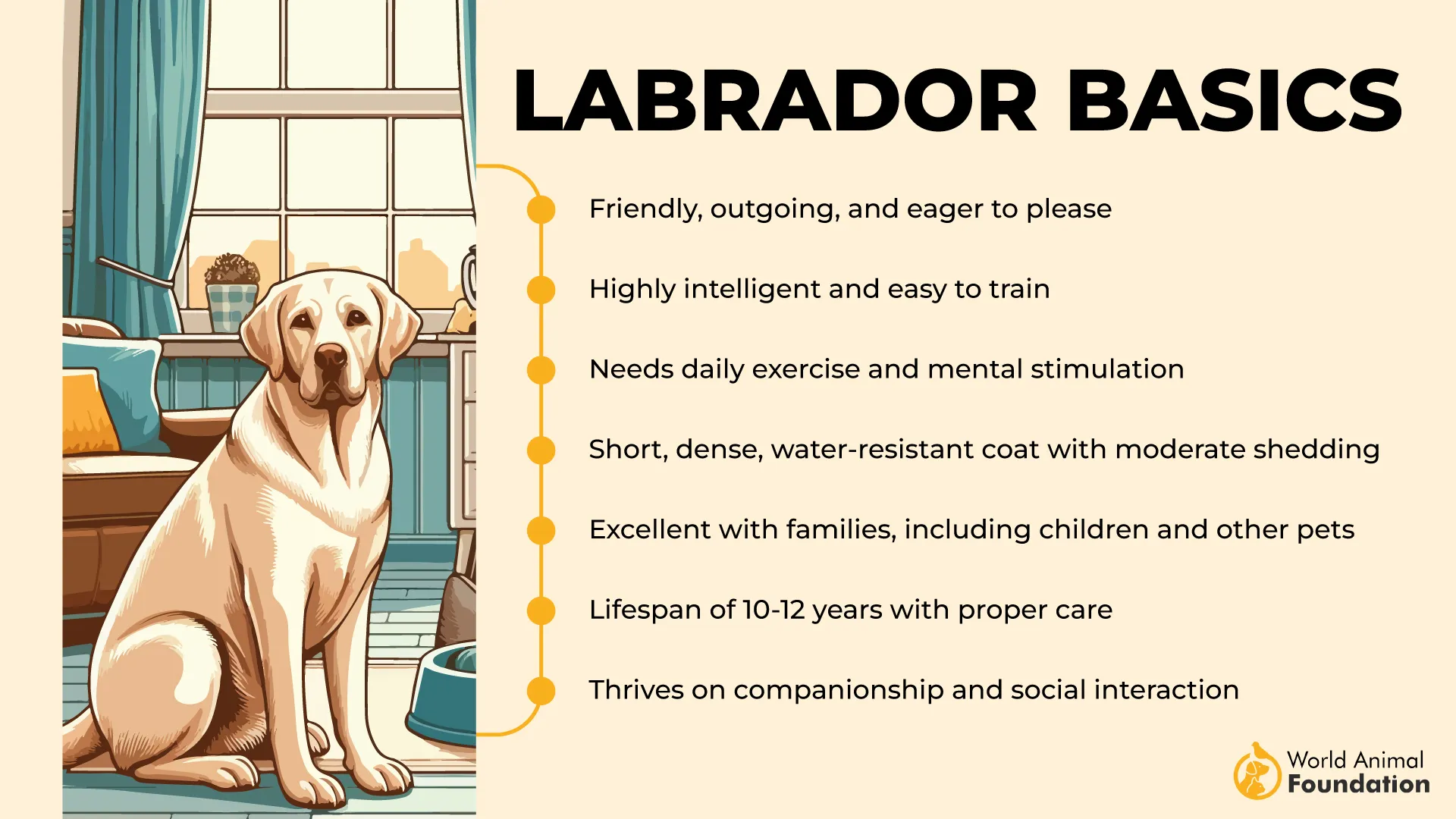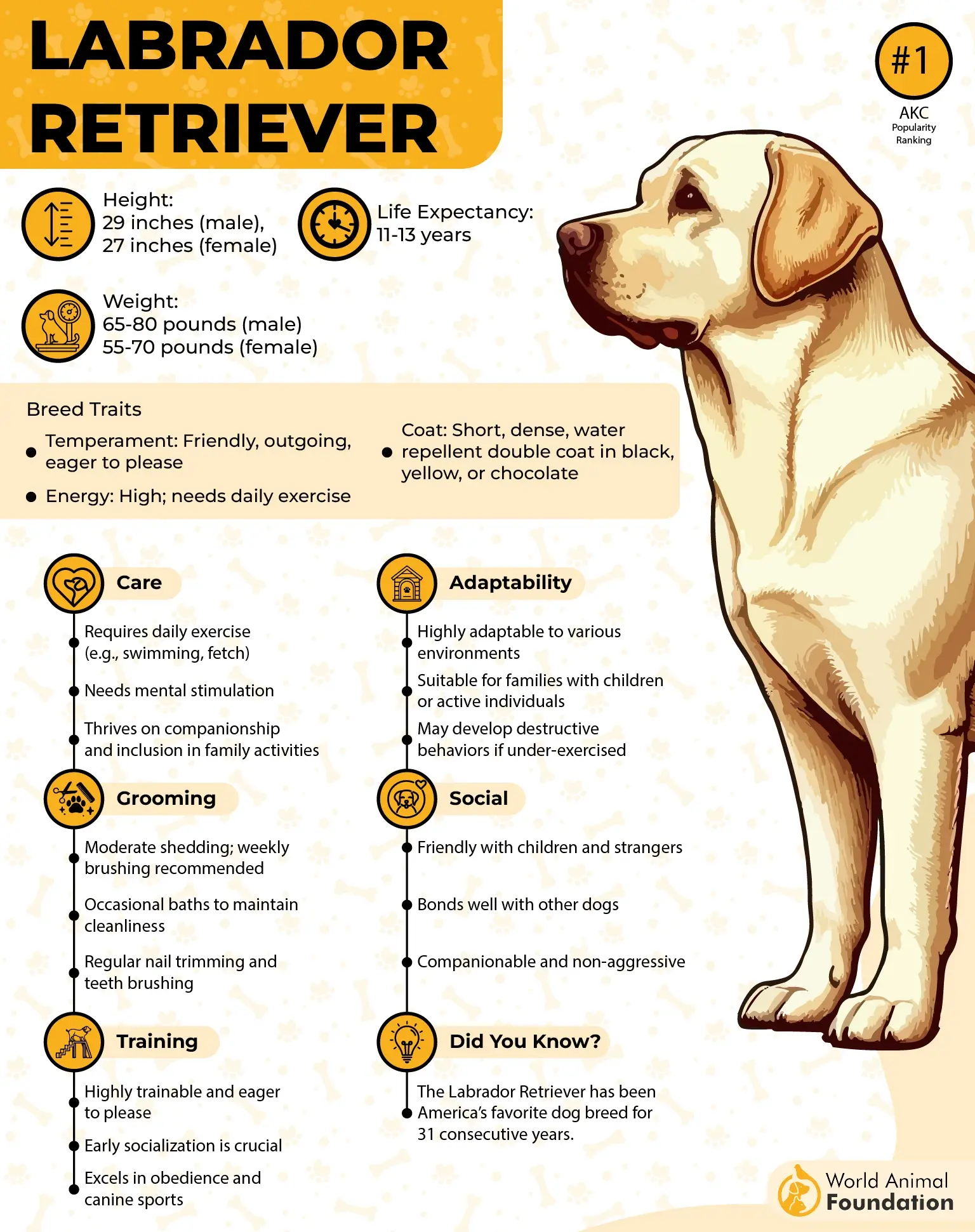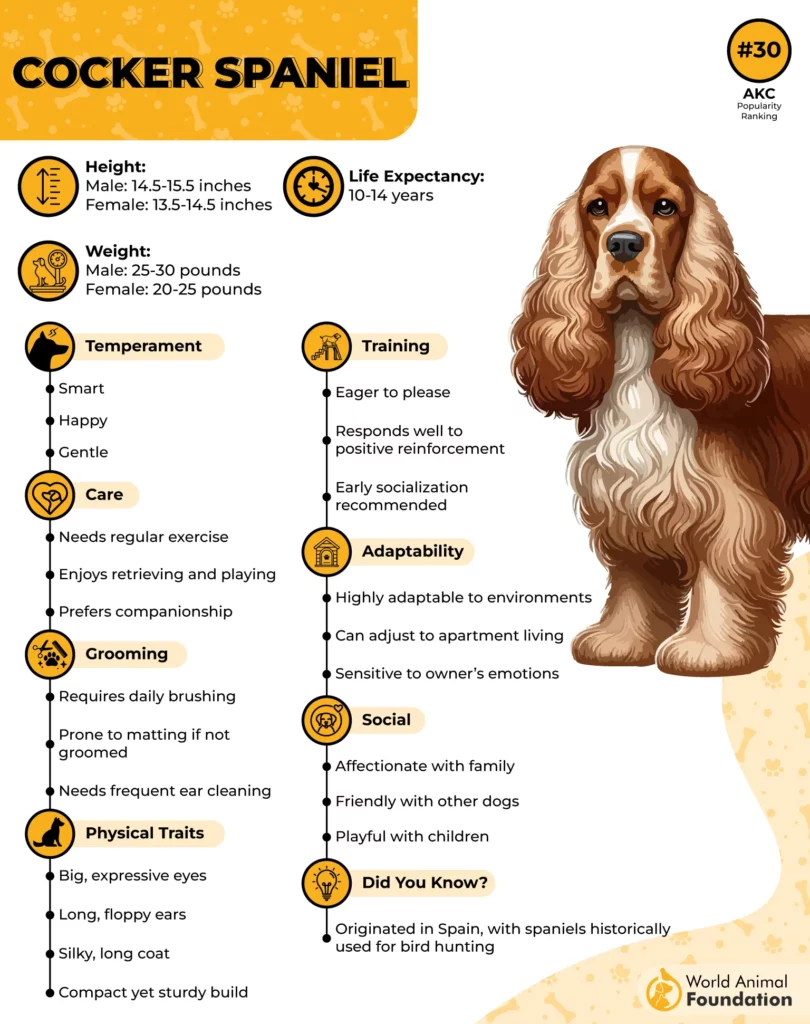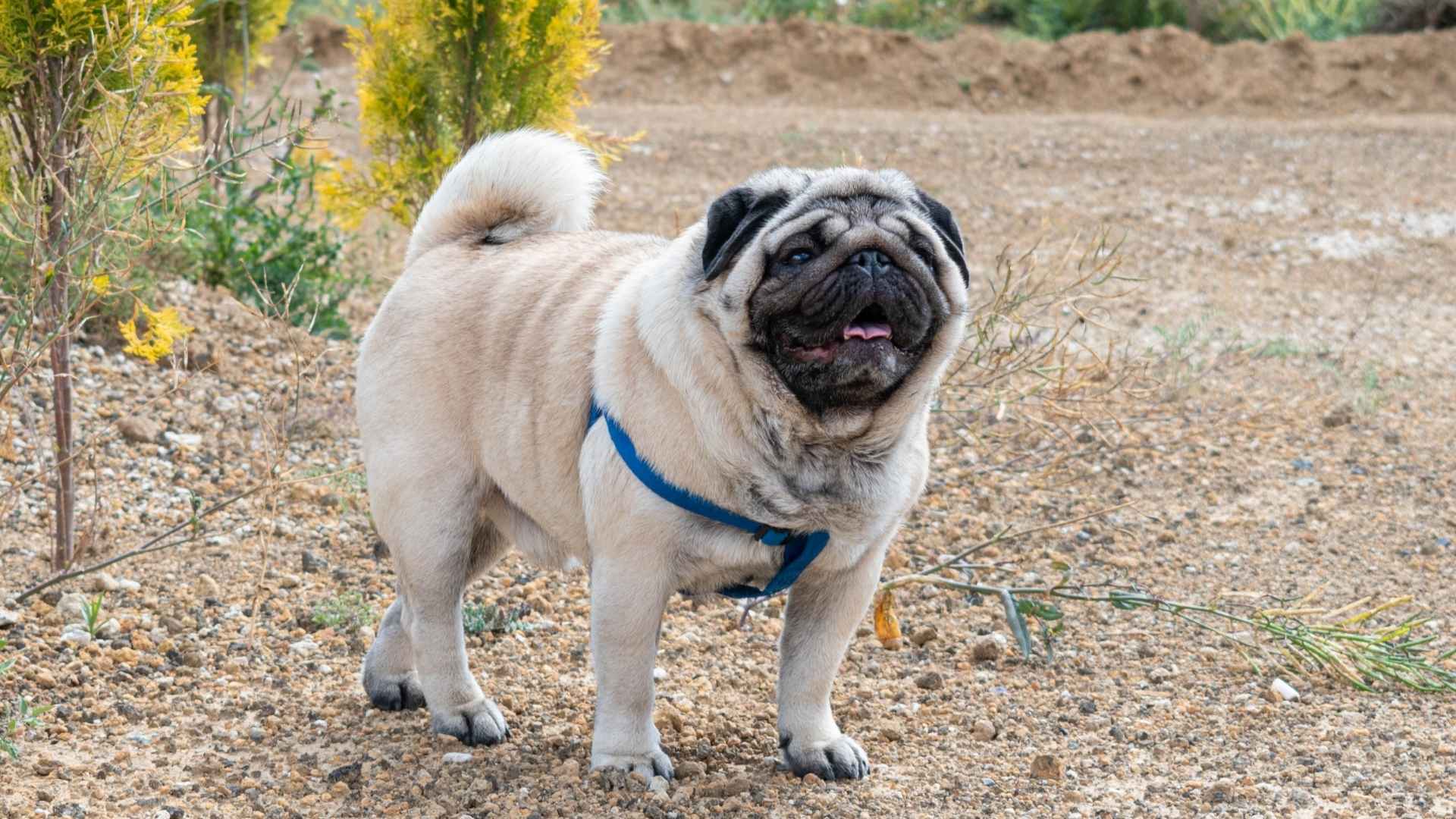What makes chubby dog breeds so endearing to many dog lovers, and how can owners ensure they lead healthy lives?
Some breeds are prone to obesity due to overfeeding and a lack of exercise. These breeds require extra care when it comes to diet and weight gain. PetMD also noted that 65% of dogs in the United States are overweight or obese.
Furthermore, maintaining a healthy weight is crucial for dogs to prevent various health issues. Consequently, it is important for potential dog owners to meticulously research the specific dietary and exercise needs of these breeds.
By being mindful of the treats and snacks you give your dog, you will help to mitigate the risk of obesity-related health complications. These breeds thrive on attention and interaction, making them perfect companions for families and individuals alike.
Let’s take a close look at the top 7 chubby dog breeds that have stolen the hearts of many owners and examine their breed-specific needs.
Chubby Dog Breeds
1. Labrador Retriever

Labrador Retrievers are a popular dog breed and are usually overweight due to various factors. They are one of the most popular dog breeds in the US.
Labrador Retrievers are medium to large sporting dogs known for their energy and friendly nature, making them excellent companions for families.

Genetic Predisposition
Labrador Retrievers have a genetic tendency towards obesity. Most of the Labrador Retrievers have such a genetic makeup, which makes them more food motivated. This makes them easy to train, but they cannot recognize when they are full, so they overeat and gain weight.

Obesity Factors
Labradors tend to overeat and lack satiety recognition, leading to weight gain. The prevalence of chubby Labradors has normalized obesity, altering owners’ perceptions of healthy weight.
Health Implications
Obesity in Labrador Retrievers increases the risk of heart and liver disease, joint problems, skeletal issues, and metabolic and respiratory disease, according to Purina. It can also lead to bloat, a potentially life-threatening condition characterized by a distended abdomen or swollen abdomen.
Maintaining a healthy weight through diet and exercise is crucial to preventing these health issues.
2. Cocker Spaniels

Cocker Spaniels tend to be thought of as energetic dogs that are always running around. But surprisingly, they are one of the breeds most at risk of being a bit chunky.
Genetic Predisposition
They were originally bred as working dogs, leading to a genetic predisposition to being food motivated to meet their appetite.

Obesity Factors
They usually get a big appetite and a tendency to use their puppy eyes to convince you that everything belongs in their tummy. As pets, they tend to enjoy a laid-back lifestyle, often lounging around more than moving, unlike their hardworking ancestors. This shift can easily lead to a few extra pounds if their activity levels aren’t kept in check.
They are especially prone to gaining weight after becoming spayed or neutered. So they need extra care after a big operation.
Health Implications
Obesity can exacerbate canine hip dysplasia and luxating patella in Cocker Spaniels. Excess weight strains joints, worsening conditions, and increasing health risks.
3. Golden Retriever

Golden Retrievers are one of the breeds most likely to become overweight. Golden Retrievers are friendly, gentle companions known for their loyalty and easygoing nature. With their love for people and eagerness to please, they fit perfectly into family life.

Genetic Predisposition
They are affectionate dogs who have a gentle nature. Golden Retrievers are usually overweight due to their genetic makeup.
Obesity Factors
They are food-motivated and tend to overeat, requiring portion control to maintain a healthy weight. People usually adopt these dogs without thinking of their exercise needs and energy levels. Instead of providing them plenty of physical exercise, they make them lazy and food-motivated.
Health Implications
Their long fur can hide weight gain, making regular body condition checks necessary by feeling their tummy and ribs. Obesity can lead to health issues, emphasizing the need to monitor and maintain a healthy weight through diet and regular checks on body conditions.
4. Pugs
Pugs are often described as chubby due to their compact, barrel-shaped bodies and are prone to weight gain if not properly managed.
Many have broad chests and a short, stocky build that can be mistaken for obesity, so it’s important to distinguish between their natural physique and excess weight.
Genetic Predisposition
A study by the Royal Veterinary College found that Pugs are 3.12 times more likely to be overweight, with over 60% of Pugs being obese. However, responsibly bred Pugs with healthy testing and BOAS grading are energetic dogs.
Obesity Factors
These flat-faced dogs have breathing problems, which make them reluctant to exercise. These pups tend to be called lazy because they have a tendency to curl up on the couch with their owners. These devoted pups expect humans to be around all the time.
Health Implications
They are lazy by nature and cause issues to the dog’s health if they do not do regular exercise and walk. Obesity in Pugs can lead to various serious health issues, including breathing difficulty, heart problems, and an increased risk of certain cancers.
5. Beagle
Beagles are generally classified as medium-sized dogs, but they actually come in two sizes: one stands 13–15 inches tall, and the other is under 13 inches.
Regardless of height, a full-grown Beagle should not weigh more than 30 pounds. Beagles are an active working breed, yet there is a high chance of them becoming overweight.
Genetic Predisposition
Due to specific gene mutations and breed-specific traits like an insatiable appetite and a strong sense of smell, they tend to gain excess weight over time.
Obesity Factors
Like other working breeds, their breeding history has favored food-motivated dogs, making them more likely to be overweight.
Health Implications
Studies have shown that Beagles are more likely to be overweight compared to other breeds. It can lead to several serious health problems, including heart disease, diabetes, and joint issues like arthritis.
As a result, it is essential to monitor these pups’ weight and take steps to prevent obesity-related health issues.
6. Dachshunds
Dachshunds easily develop an extra pooch due to their unique sausage-body shape. Their long body structure can obscure visible signs of a healthy weight, such as a defined waist or abdominal tuck.
Genetic Predisposition
Dachshunds are predisposed to several genetic health problems due to their unique conformation and breeding.
Obesity Factors
The prevalence of overweight Dachshunds has become so common that it is often perceived as the norm. Many owners may not recognize when their Dachshund is overweight and in pain because they are accustomed to seeing their Dachshund with a similar body type.
Health Implications
The weight gain associated with Dachshunds can exacerbate health issues such as IVDD and arthritis. As a result, it becomes increasingly challenging for their owners to help their dogs lose weight, creating a vicious cycle.
7. Basset Hound
Basset Hounds tend to overeat, as they lack self-regulation when it comes to food intake; they can’t stop without consuming all available food.
Genetic Predisposition
They are devoted companions and are overweight due to their genetic makeup. Their adorable, calm nature can be misleading, as they are working dogs that require regular exercise.
Typically, their breed characteristics, such as short legs, can affect their exercise habits and overall health.
Obesity Factors
They are often imagined as lazy, but they are affectionate and enjoy walks. They are lucky if owners who engage them in physical activity can help prevent being overweight.
However, their lazy demeanor can lead to inadequate exercise, causing them to become fat.
Health Implications
They are at risk of health issues, spending hours in discomfort. Regular vet checkups are crucial to monitor their health and address potential issues. These cute pups are monitored under the body condition score, which is used to assess their health.
Conclusion
To keep chubby dog breeds healthy, owners must be mindful of their diet and exercise needs. Researching breed-specific requirements is crucial to prevent health issues such as obesity-related complications.
By being aware of treats and snacks, owners can take proactive steps. With attention and interaction, these breeds thrive as perfect companions for humans.
Ensuring a healthy relationship between a dog and its owner requires effort and dedication, but the rewards are well worth it, leading to a long and fulfilling companionship for both.


